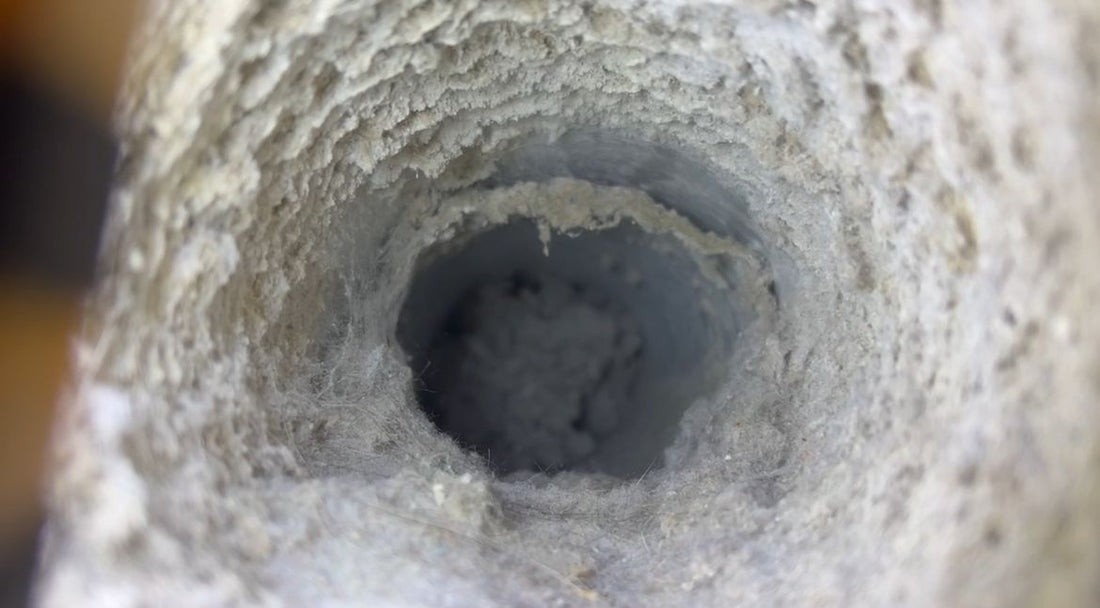
How to Prevent Lint Buildup in Your Dryer Vent
Share
Lint may seem like a small problem—but when it comes to your dryer, it can pose a serious risk. Each year, thousands of house fires are caused by clogged dryer vents. On top of that, lint buildup reduces your dryer's efficiency, increases your energy bills, and shortens the lifespan of your appliance.
So how can you prevent this hidden hazard? Here's everything you need to know to keep your dryer vent lint-free and running safely.
Why Lint Buildup Is a Big Deal
Before we get into prevention tips, it's important to understand why lint buildup should never be ignored:
-
Fire Hazard: Lint is highly flammable. A clogged dryer vent can easily cause overheating, leading to a house fire.
-
Inefficiency: When airflow is restricted, your dryer has to work harder and longer to dry clothes.
-
Higher Bills: More cycles mean higher energy use and increased costs.
-
Appliance Damage: Constant strain on your dryer can lead to costly repairs or the need for early replacement.
Signs Your Dryer Vent Has Lint Buildup
Watch for these red flags that your dryer vent might be clogged:
-
Clothes take longer than usual to dry
-
The outside of the dryer or laundry room feels unusually hot
-
You notice a musty smell or burning odor during use
-
There’s little to no airflow from the exterior dryer vent
7 Ways to Prevent Lint Buildup
1. Clean the Lint Trap After Every Load
This is the easiest and most essential step. Remove lint from the filter after each cycle. A clean lint trap improves airflow and helps catch loose fibers before they reach the vent.
2. Check the Lint Screen for Residue
Sometimes fabric softeners and dryer sheets can leave a film on the lint screen that blocks airflow. Every month, wash the lint screen with warm, soapy water and a soft brush. Let it dry completely before reinserting.
3. Inspect the Dryer Duct Regularly
Disconnect the dryer from power and inspect the vent duct every few months. Look for visible lint buildup, kinks, or crushed areas that can restrict airflow.
4. Use a Short, Straight, and Rigid Duct
Flexible plastic or foil hoses are more likely to trap lint and pose fire hazards. Replace these with rigid or semi-rigid metal ducts and keep the vent path as short and straight as possible.
5. Clean the Dryer Vent at Least Once a Year
Hire a professional or use a dryer vent cleaning kit to clean out the entire vent line annually—or more often if you do laundry frequently or have a large household.
6. Check the Outside Vent Cap
Make sure the exterior vent flap opens freely when the dryer is running and closes when it’s off. Clear away any lint, leaves, or debris that might block the opening.
7. Avoid Overloading the Dryer
Too many clothes in one load not only strain your appliance, but also increase lint production. Stick to the manufacturer’s recommended load size.
Bonus Tip: Schedule a Professional Dryer Vent Cleaning
While DIY maintenance goes a long way, some lint still sneaks past your efforts. A professional dryer vent cleaning service uses specialized tools to thoroughly clear lint buildup—even deep inside walls or long vent runs. This annual service is quick, affordable, and could prevent a devastating house fire.
Final Thoughts
Preventing lint buildup in your dryer vent isn’t just about efficiency—it’s about safety. Regular maintenance helps protect your home, your family, and your investment in your appliances. With a few simple habits and annual professional cleanings, you can keep your dryer running smoothly and safely.
